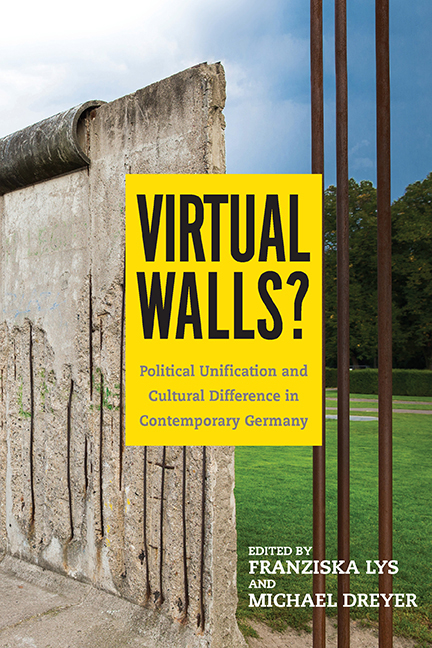Book contents
- Frontmatter
- Dedication
- Contents
- Acknowledgments
- Introduction: United Politics—Divided Culture?
- Part I What Remains: History and the Constitution
- Part II What and How Do We Remember? Literature, Film, and Exhibitions
- Part III A Changing Reception: Painting, Orchestras, and Theaters
- Part IV A Virtual Wall? Education and Society
- 8 What Do German High School Students Think about the GDR? Memory Culture between Glorification and Evaluation
- 9 The Ongoing Significance of East Germany and the Wende Narrative in Public Discourse
- Epilogue: The Wende and the End of “the German Problem”
- Notes on the Contributors
- Index
8 - What Do German High School Students Think about the GDR? Memory Culture between Glorification and Evaluation
from Part IV - A Virtual Wall? Education and Society
Published online by Cambridge University Press: 24 August 2019
- Frontmatter
- Dedication
- Contents
- Acknowledgments
- Introduction: United Politics—Divided Culture?
- Part I What Remains: History and the Constitution
- Part II What and How Do We Remember? Literature, Film, and Exhibitions
- Part III A Changing Reception: Painting, Orchestras, and Theaters
- Part IV A Virtual Wall? Education and Society
- 8 What Do German High School Students Think about the GDR? Memory Culture between Glorification and Evaluation
- 9 The Ongoing Significance of East Germany and the Wende Narrative in Public Discourse
- Epilogue: The Wende and the End of “the German Problem”
- Notes on the Contributors
- Index
Summary
Introduction
THE GERMAN CARTOONIST Felix Görmann, known as Flix, published a book in 2009 combining a two-year-long series of weekly recollections in the Berlin daily newspaper Tagesspiegel. The subject matter of these reflections involves personal experiences—Görmann's own and those of friends—regarding the German Democratic Republic (GDR) before 1989. Unlike many movies and TV shows about daily life in the former GDR, the stories presented in Flix's cartoons neither romanticize nor condemn the Communist regime, nor do they overemphasize the Stasi secret police. The authentic episodes illustrate people's ambivalent experiences with the GDR from both sides of the Iron Curtain.
These cartoons can be seen as part of a new culture of remembrance that stands in opposition to lingering ideological positions that either glorify or totally renounce the political system and social aspects of the former GDR. Surrounding the twentieth anniversary of the fall of the Berlin Wall, a lively debate about memory culture surfaced in German public discourse. The main points discussed by prominent politicians and intellectuals as well as in the media centered around the question of whether the GDR was a totalitarian dictatorship, terrorized to the end by secret police, or rather a more liberal dictatorship, given its investments in public health care and preschool education, to name two examples. A considerable part of the population of the former GDR is unwilling to regard itself as having belonged to a totalitarian society. More than twenty-five years after the fall of the Wall, they still recall happy memories of everyday life in the GDR, which they then conflate with a nostalgic view of the old political system.
The different sides of this debate will be summarized here from three perspectives. First, I will identify the key points of the ongoing discussion regarding the political and social system of the GDR. This debate not only highlights the various ambivalent evaluations of East German society but also raises the question of how to present this topic in history and political-science classes in schools. Second, I will discuss the most important results of two empirical studies demonstrating what current middle and high-school students in Germany know about the GDR and what their political opinions are.
- Type
- Chapter
- Information
- Virtual Walls?Political Unification and Cultural Difference in Contemporary Germany, pp. 145 - 165Publisher: Boydell & BrewerPrint publication year: 2017

